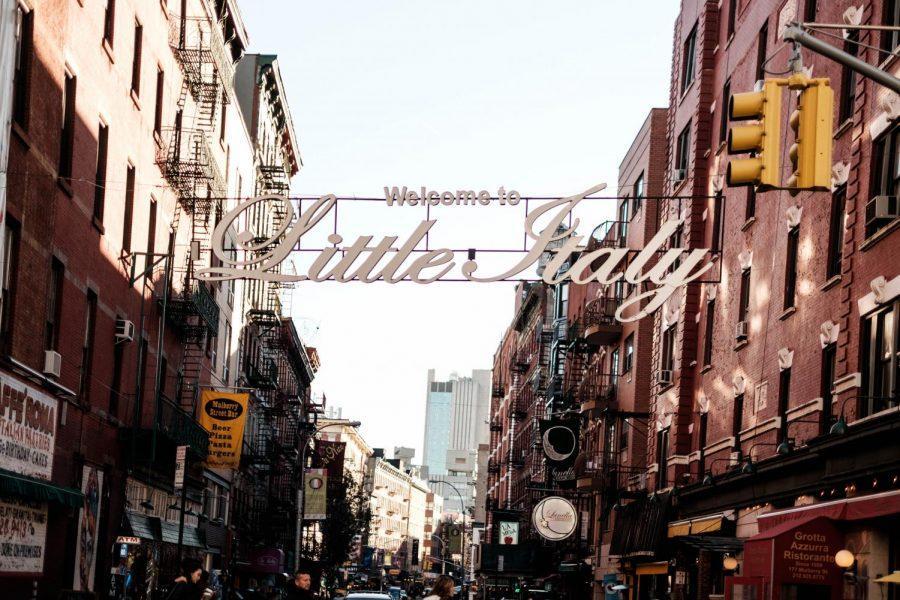Explore With Me: (Not So) Little Italy
People are first welcomed to Little Italy by the sign arching over the street. There is a variety of Italian food available in the neighborhood.
November 27, 2017
With the fluorescent “Welcome to Little Italy” sign warmly gracing the sky, this incredible historic district has quite a lot to offer despite the implications of its name. Labeled after the large influx of immigrants that came during the early 20th century, Little Italy was already a tourist location by 1940 because of its authentic Italian food and rich culture.
Of course, when you think of Little Italy, food is the first thing that pops into your mind. The perfect slices of pizza that really hit the spot and heavenly plates of pasta wouldn’t be complete without the cheese, would they? Take it back to basics and visit the oldest cheese shop in America — the iconic Alleva Dairy. Fun fact: Tony Danza purchased the shop to keep its history alive after the original owners decided to sell up. Other than its drool-worthy selection of cheeses and meats, Alleva Dairy offers sandwiches and prepared foods.
Craving something a bit sweeter? Don’t worry, you’ll be a minute’s walk away from Ferrara Bakery, where you can satiate your hunger. Established in 1892, Ferrara Bakery has been known as legendary and charming by visitors who go for the assortment of pastries, cakes, cookies and coffee. Whether it be for a quick bite of a cannoli or a dig into rich cheesecake, Ferrara Bakery has got you covered with 120 years worth of experience (and counting).
There are many other ways to make the most of the Italian-American cultures rather than just succumbing to the food beckoning from the countless restaurants lining the streets. Visit the Italian American Museum and see how Italian immigrants played a crucial part in the shaping of Little Italy and New York City. Museum entrance is also donation-based; suggested at $7, this museum is definitely worth the visit.
A couple years ago, you may have been introduced to The New York Earth Room through an intriguing photo of what appears to be dirt behind a glass wall. The piece of art has actually been on display since 1980 in Little Italy. Commissioned by the Dia Art Foundation, this unique piece can’t be photographed, which provides even more of an incentive to see it in person.
If you’re in great need of a therapeutic reading session with a cup of coffee, go straight to McNally Jackson. It is an extensive bookstore with quite a selection, and McNally Jackson also has a cafe and a plethora of events daily. Most events start at 7 p.m. on weekdays, so allow yourself to take a breather after class through thought-provoking conversation and engage with a multitude of authors spanning different genres.
Art, architecture and design — Storefront for Art and Architecture is a non-profit space specializing in all three. Storefront has responded to political and social issues throughout the past 35 years including the 2011 Occupy Wall Street movement, making it quite a space for provocative and unique perspectives.
Little Italy started off as a daunting new beginning for Italian immigrants during the late 1870s and gradually turned into a lively community that has prospered to become the charismatic place it is today. It is an area not only recognized for its history but is symbolic of the beauty of preservation, as exemplified in Little Italy’s restaurants, museums and streets.
Email Liv Chai at [email protected].
















































































































































